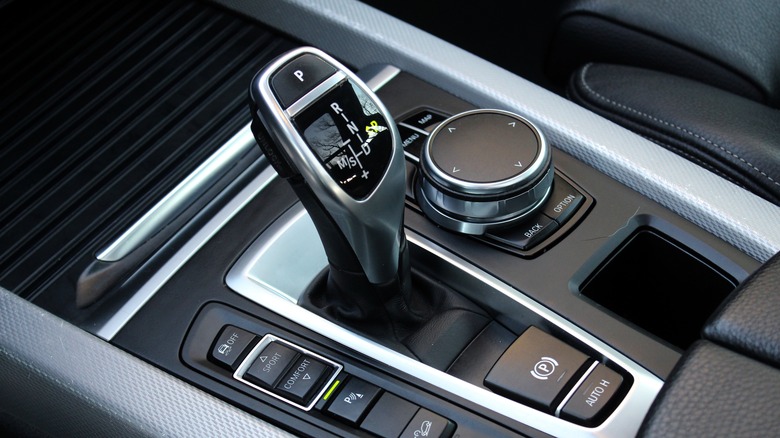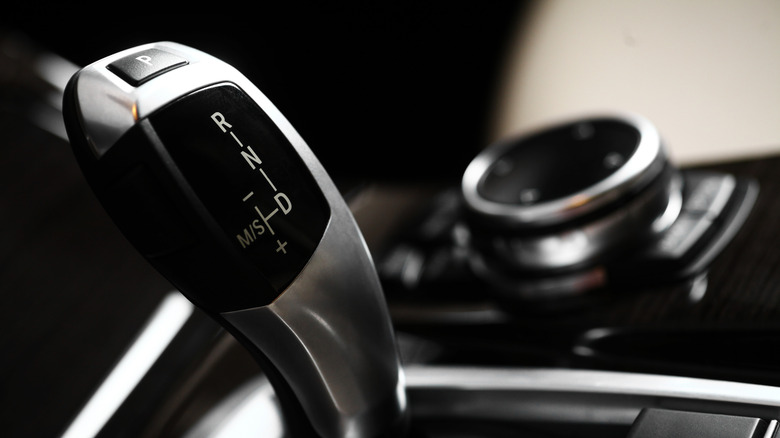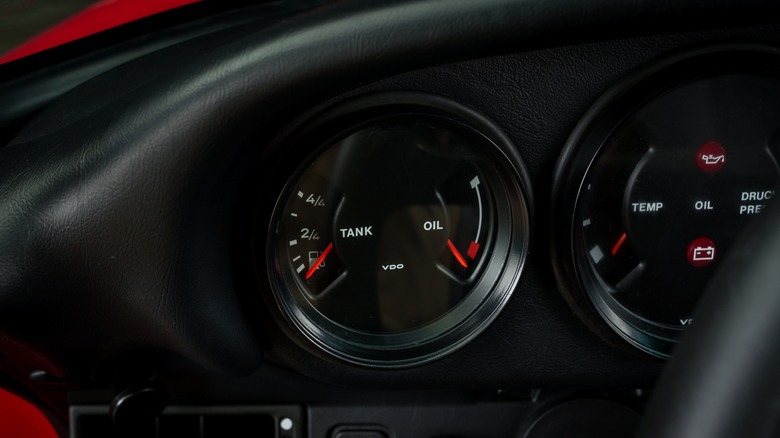What Does 'M' Mean On (Or Near) Your Car's Gear Shift?
If you've ever glanced at your car's gear shift and noticed an "M", you might have wondered what it means. Automatic vehicles often come with various selector modes to improve the driving experience. While automatics handle shifting for you, some drivers still want a bit more. That's where the "M" mode comes in. Knowing what it does can help you make the most of your car's performance and enjoy a more engaging experience.
The "M" stands for manual mode, a feature found in some automatic vehicles that lets you take control of gear changes. Unlike a fully manual transmission that requires a clutch pedal, the manual mode allows you to shift gears yourself using either the gear lever or paddle shifters, depending on your car. This gives you more control over power delivery and engine braking. It comes in handy when driving on steep inclines, towing, or navigating tricky road conditions. Essentially, it's an automatic transmission with manual shifting capabilities.
Not every car has an "M" mode, and manufacturers don't always use the same labels. Some vehicles might use "S" (Sport Mode) or display "+" and "-" symbols for manual gear selection. Others may have additional options like "L" for Low Gear or "H" for High Gear, but this also depends on the vehicle's transmission system. Despite these variations, the purpose remains the same — to give drivers more control when needed while keeping the convenience of an automatic transmission.
How manual mode works
Switching to manual mode isn't as complicated as it might sound, but there are a few things to keep in mind. Once you shift into manual mode, you'll typically have two ways to change gears: paddle shifters or the gearstick. Paddle shifters are usually located behind the steering wheel. Pulling the "+" paddle upshifts, while pulling the "-" paddle downshifts. This way, you can control the shifts without taking your hands off the wheel — similar to how race cars operate. If your car doesn't have paddle shifters, you can still shift manually using the gear lever. In most cars, pushing the stick forward upshifts while pulling it backward downshifts. This setup mimics the natural motion of shifting in a traditional manual car.
Even though manual mode gives you control, the car won't let you do anything that could seriously harm the engine. Most automatic cars in M mode have a set number of pre-programmed gears. If you try to downshift at high speed, the car won't allow it if it risks over-revving the engine. Conversely, if you forget to upshift, the car will intervene and shift for you before the RPMs get dangerously high.
Some cars provide additional feedback to help you manage shifts. When you switch from D (drive) to M (manual) in, say, a Mazda3, the instrument panel displays the current gear so you can keep track of shifts. If a gear change isn't possible, the system might even sound a warning to alert you. This way, you're never at risk of pushing it beyond safe limits.
Why you should use the manual mode
You might be wondering — if your car's automatic transmission is already doing all the shifting for you, why bother using manual mode at all? One of the biggest advantages of manual mode is the added control over your vehicle's performance. If you're driving through hilly terrain, an automatic transmission might not always select the ideal gear. You could find your car downshifting too early or struggling to stay in the right gear. With manual mode, you get to choose the gear yourself. In this case, you'll get the right amount of torque when you need it.
Another surprising perk of manual shifting is its potential fuel efficiency benefits. While modern automatic transmissions are designed to optimize fuel consumption, there are times when locking into a gear manually can help save fuel, especially on highways or long stretches of flat roads. You can keep the engine running at a more efficient RPM, which may reduce fuel consumption compared to an automatic system that occasionally shifts unnecessarily.
Driving a manual car also offers a sportier and more engaging experience. You can directly control when to shift, which affects acceleration and responsiveness. This feature is why high-performance cars like the Toyota GR Supra and Dodge Challenger offer manual transmissions or include a manual mode in their automatic versions: to give drivers a sense of control and excitement.
When should you use manual mode?
You might not need it for your everyday commute, but in certain situations, it can make a huge difference in how your car performs. One of the best times to use manual mode is when driving downhill. In automatic mode, your car relies heavily on the brakes to control speed, which can lead to overheating and fading — especially on long or steep descents. Switching to manual mode and downshifting to a lower gear lets you use engine braking to slow down naturally without putting extra stress on your brakes.
Uphill driving is another situation where manual mode can be useful. If you've ever climbed a steep hill and felt your car awkwardly shifting up and down, manual mode can help. In this case, switching to manual mode and locking into a lower gear ensures that your car delivers constant power without the jerky shifts.
If you're towing a trailer or hauling a heavy load, manual mode gives you better control over the power delivery. Automatic transmissions may hesitate or shift at the wrong times under heavy loads. This makes it harder to maintain speed or acceleration. So, selecting the right gear manually lets you maximize torque and prevent unnecessary strain on the engine and transmission.



